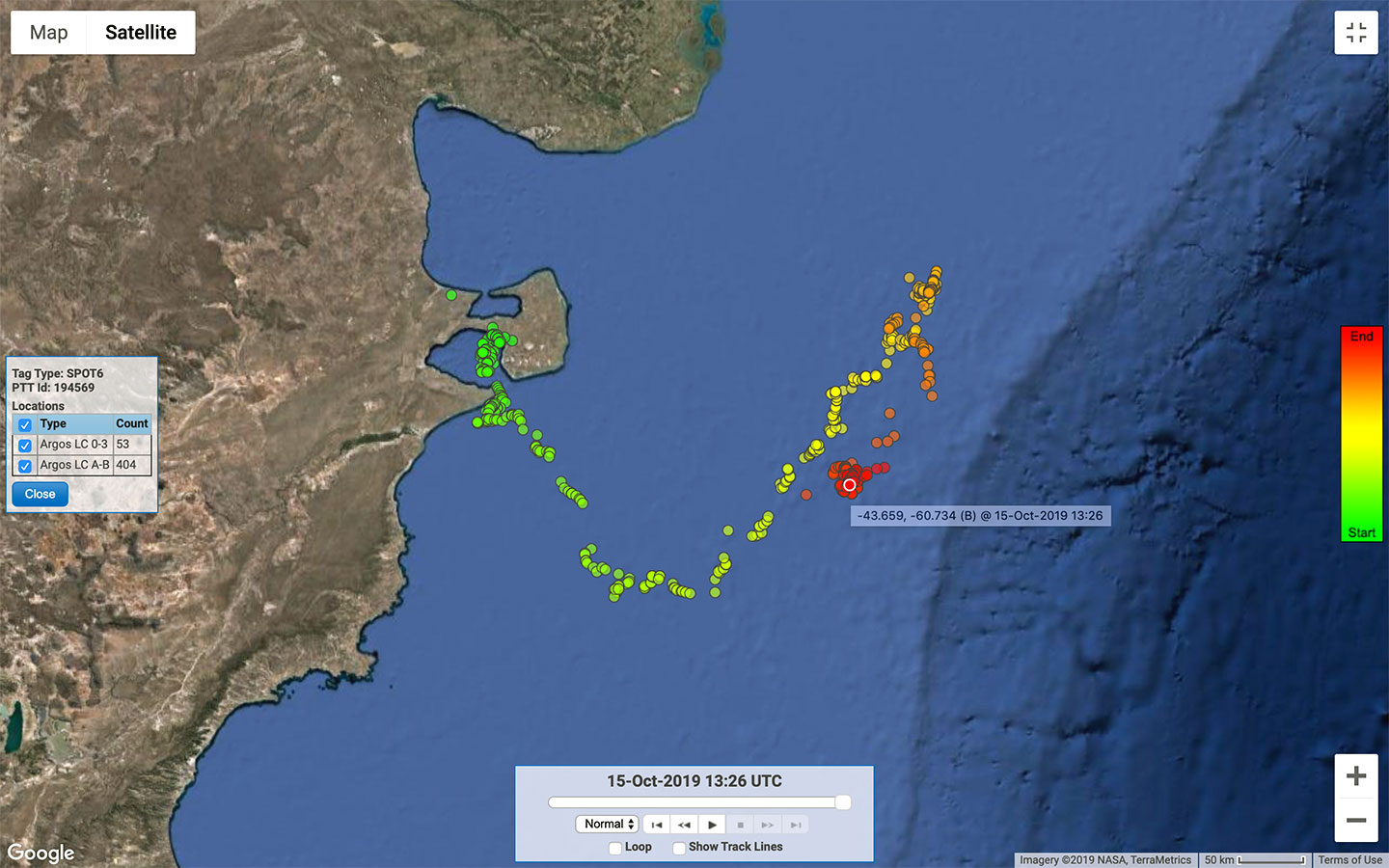Photo: R. Soley
Fiesta’s 165 day tracking route (19,924 km)
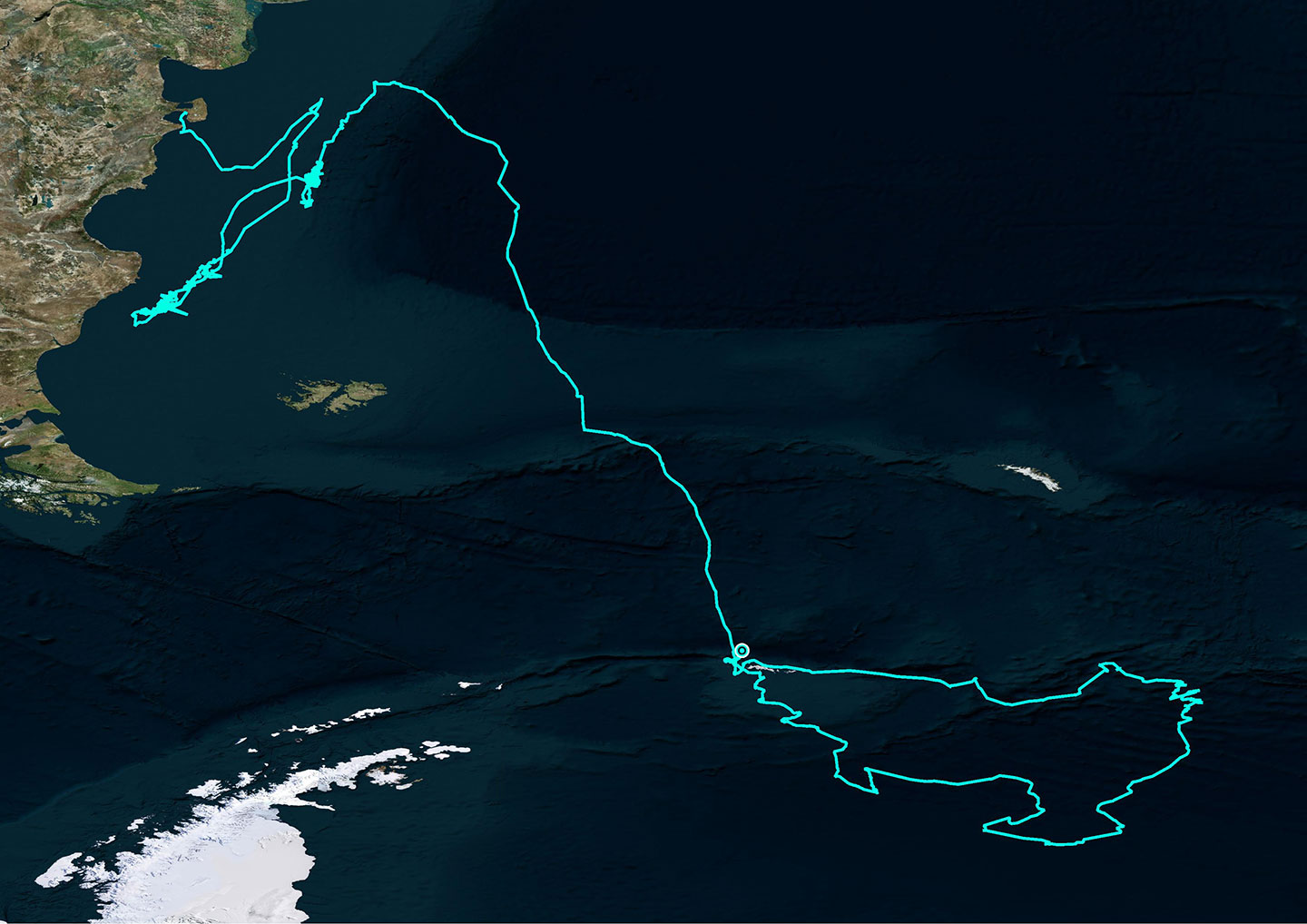
March 04 – March 07, 2020
On March 7 Fiesta’s transmitter stopped sending data, after remaining in the same area west of the South Orkney Islands for 5 days. The information obtained from this individual’s transmitter during 164 days will help understand how the whales use the different feeding areas in the Southwest Atlantic Ocean.
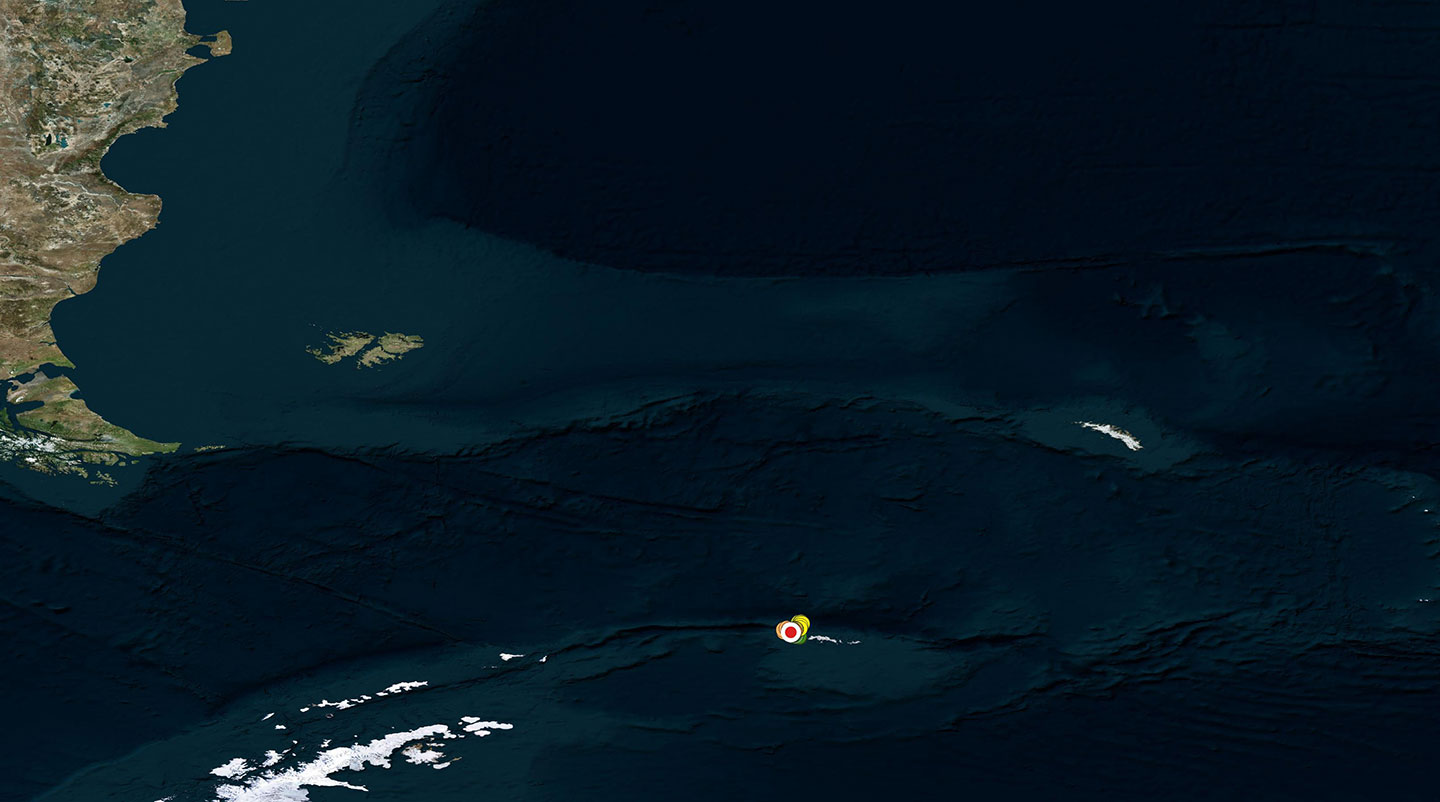
February 25 – March 03, 2020
This week Fiesta swam northwest in a zigzag pattern, and returned to the latitude of the South Orkney Islands. Fiesta is now 35 kilometers from Coronation Island, the largest island in the archipelago.
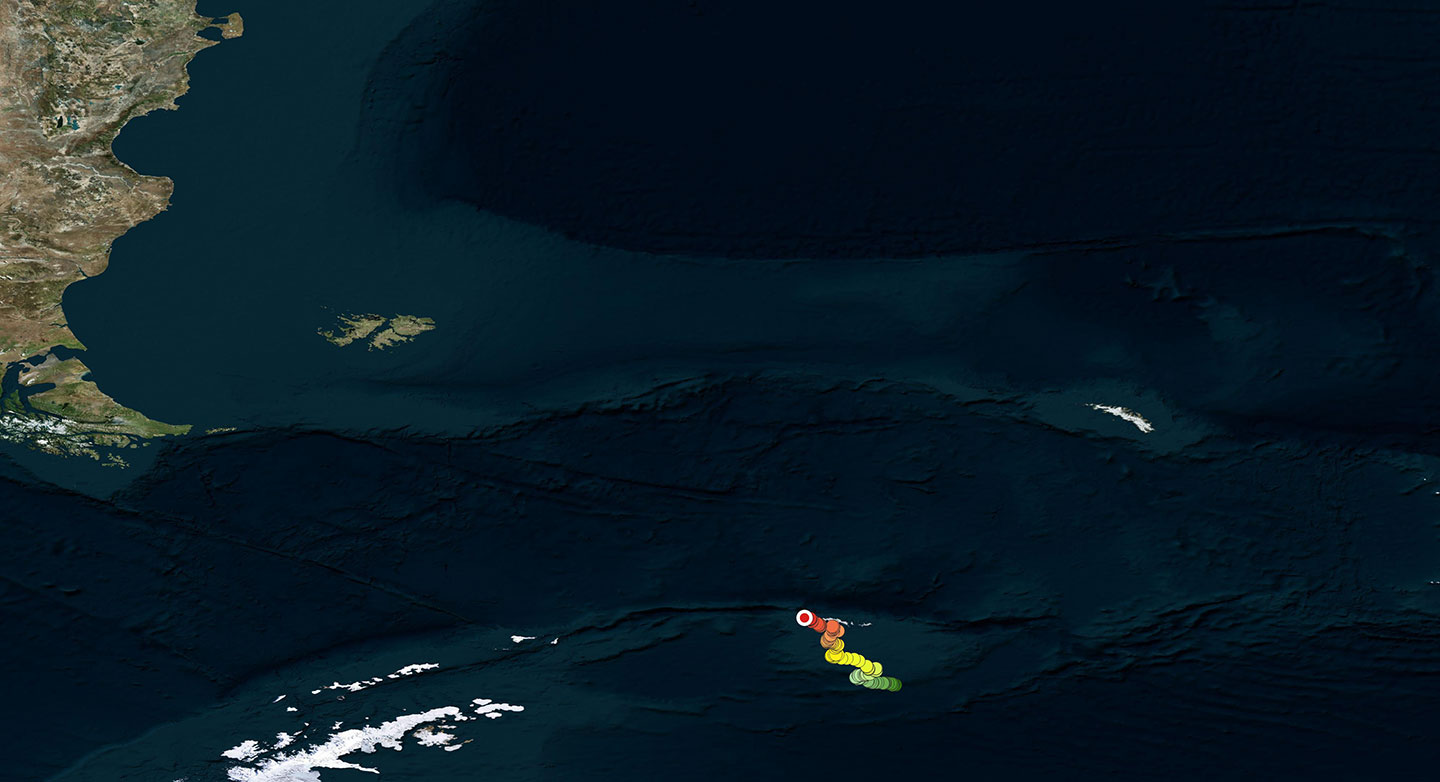
February 19 – February 24, 2020
Fiesta swam through the Weddell Sea to the west and northwest until he reached the South Orkney Islands. This solitary individual is now 200 kilometers south of the Antarctic archipelago. Misterio is also exploring this region and their satellite transmissions show they are only 90 kilometers apart.
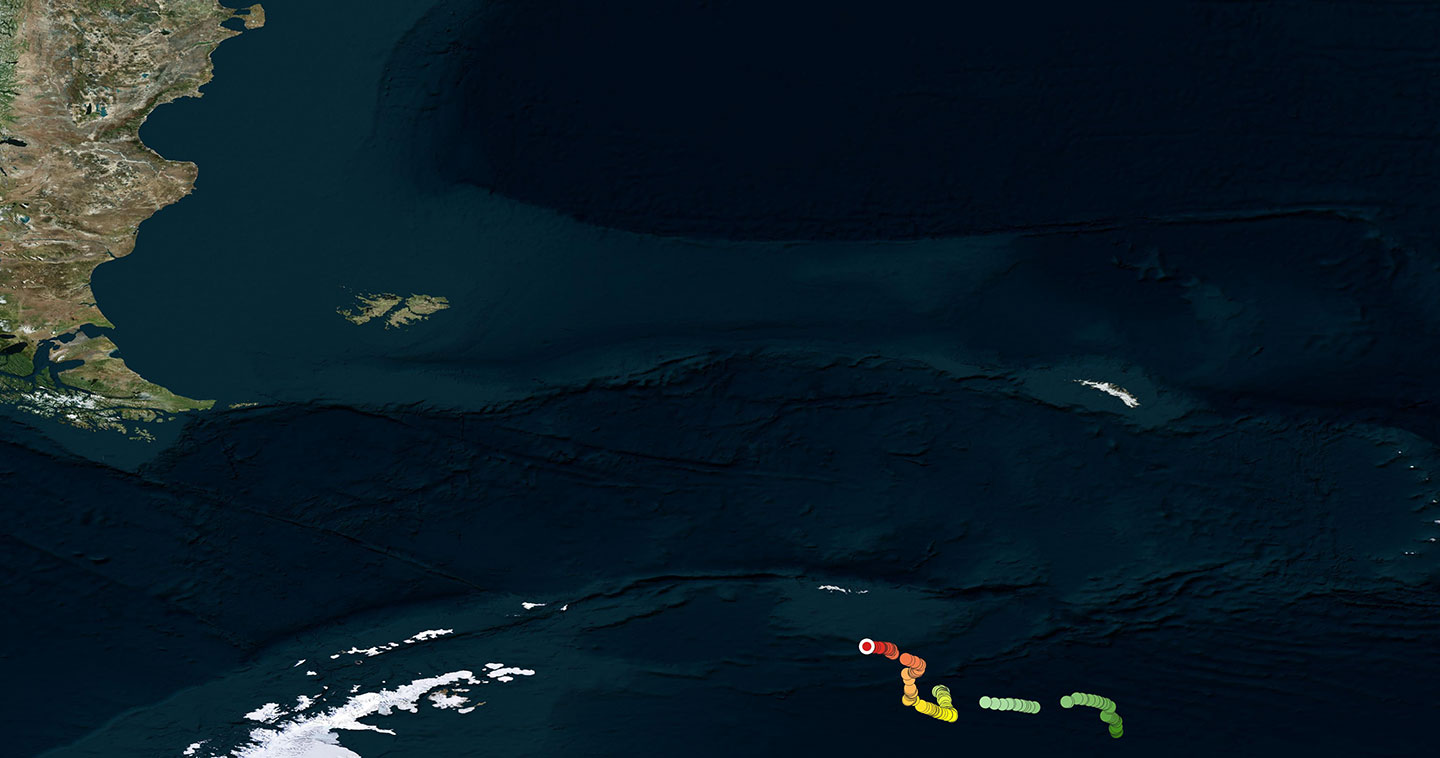
February 11 – February 18, 2020
This week Fiesta traveled southeast in the Weddell Sea to latitude 66° S. After a 700 kilometer trip it seems this solitary individual has found a good feeding area 1,100 kilometers south of the South Georgia Islands.
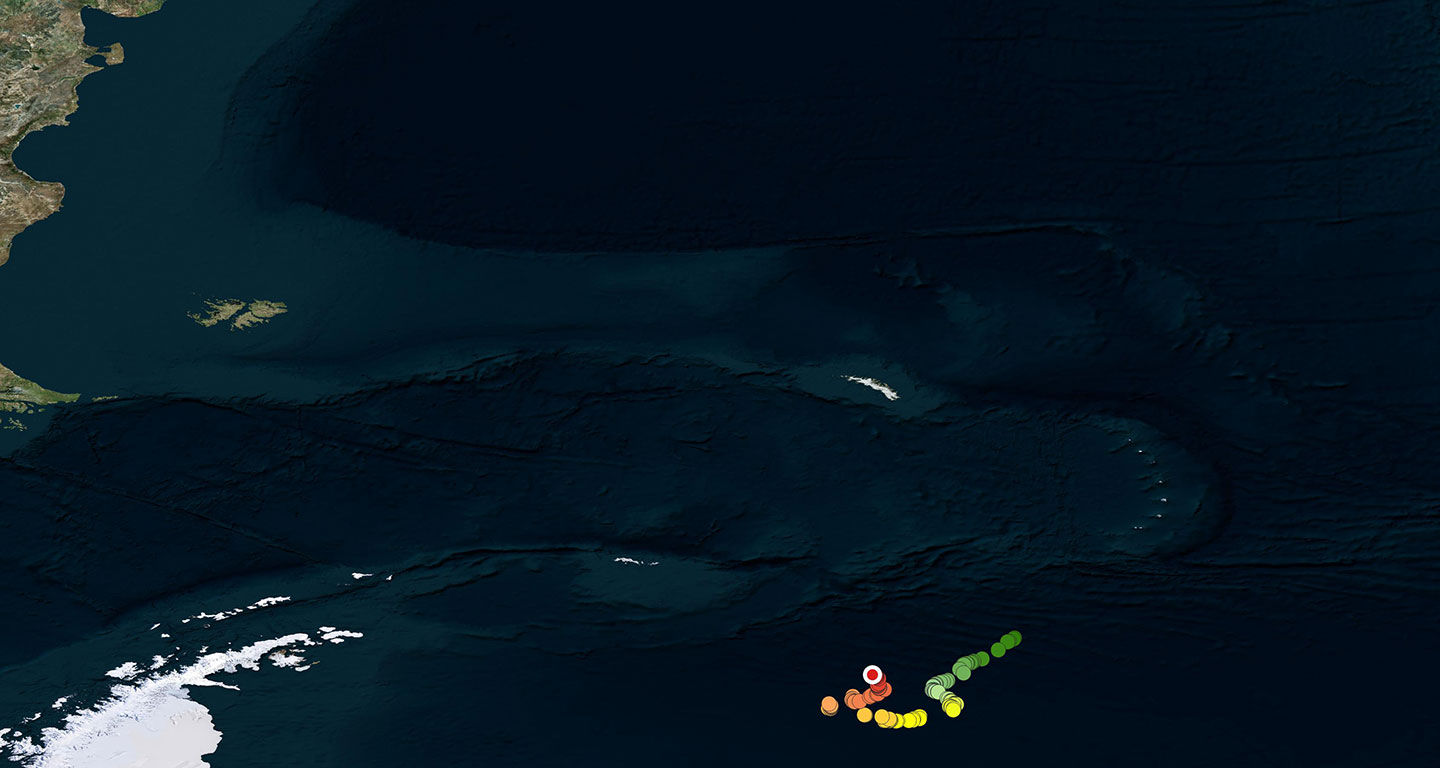
February 07 – February 10, 2020
Fiesta swam from the Scotia Sea to the Weddell Sea, and after feeding close to the South Sandwich Islands, continued through these cold, krill rich waters, to parallel 63. Fiesta is the first of the tagged whales to arrive in these Antarctic latitudes, since we launched this project.

January 29 – February 06, 2020
Fiesta has spent the last week foraging in the cold and nutrient-rich subantarctic waters. He is currently about 350 kilometers away from the insular arc that forms the South Sandwich Islands.

January 21 – January 28, 2020
In this past week Fiesta has traveled 600 kilometers farther east. Because his latest positions overlap, we can infer he has found food.

January 12 – January 20, 2020
Fiesta continued on his rapid trip southwards to the sub-Antarctic waters surrounding the Southern Orkney Islands. In 9 days he traveled 1,000 kilometers, and is now swimming due east. Fiesta has shown us that whales are exceptional swimmers!

January 06 – January 11, 2020
Fiesta continues his speedy trip south! His latest position shows he is at the latitude of the Malvinas (Falkland) Islands where the continental shelf is widest, 400 kilometers east of the islands, and swimming where depths exceed 1,000 meters.

December 29, 2019 – January 05, 2020
Fiesta is one more of the whales which used the edge of the continental slope as a guide. This whale followed the edge of the slope northeast and then swam towards the east-southeast in the direction of the Deep Atlantic Ocean Basin, an area used extensively by the mothers with calves that we are tracking.

December 22 – December 28, 2019
Fiesta has remained almost stationary during this past week. Up to now Fiesta, El Gris and “69” have remained in two highly productive feeding areas: the area off the coast of Puerto Deseado, and the area where they are now, at the edge of the continental slope. This demonstrates that the whales use various feeding areas during their post-reproduction migration.

December 16 – December 21, 2019
Fiesta, El Gris and “69”, remain in a highly productive area on the edge of the continental shelf. His latest satellite positions show him to be about 45 kilometers from El Gris. Both individuals were already close to each other in the area off the coast from Puerto Deseado. Will they remain close during this grand trip?

December 05 – December 15, 2019
After nine days swimming on the continental shelf at the latitude of Punta Tombo (at present filled with Magellanic penguin chicks), Fiesta swam away towards the south. This area on the edge of the continental shelf off the coast from the Gulf of San Jorge was visited previously by this male, and is located in the northern part of the Blue Hole.

November 26 – December 04, 2019
Fiesta is another of the individuals in the area off the coast from Puerto Deseado who decided to change his feeding zone. In the last days he swam 730 kilometers towards the northeast reaching the continental slope, where the depth descends from 200 to thousands of meters.

November 17 – November 25, 2019
Fiesta is following “69” closely. At present they are about 7 kilometers apart, almost touching if we consider the immensity of the ocean.

November 10 – November 16, 2019
Fiesta, El Gris and “69” remain together south of Golfo San Jorge. This adult male moved slightly northeast of where he was last week.
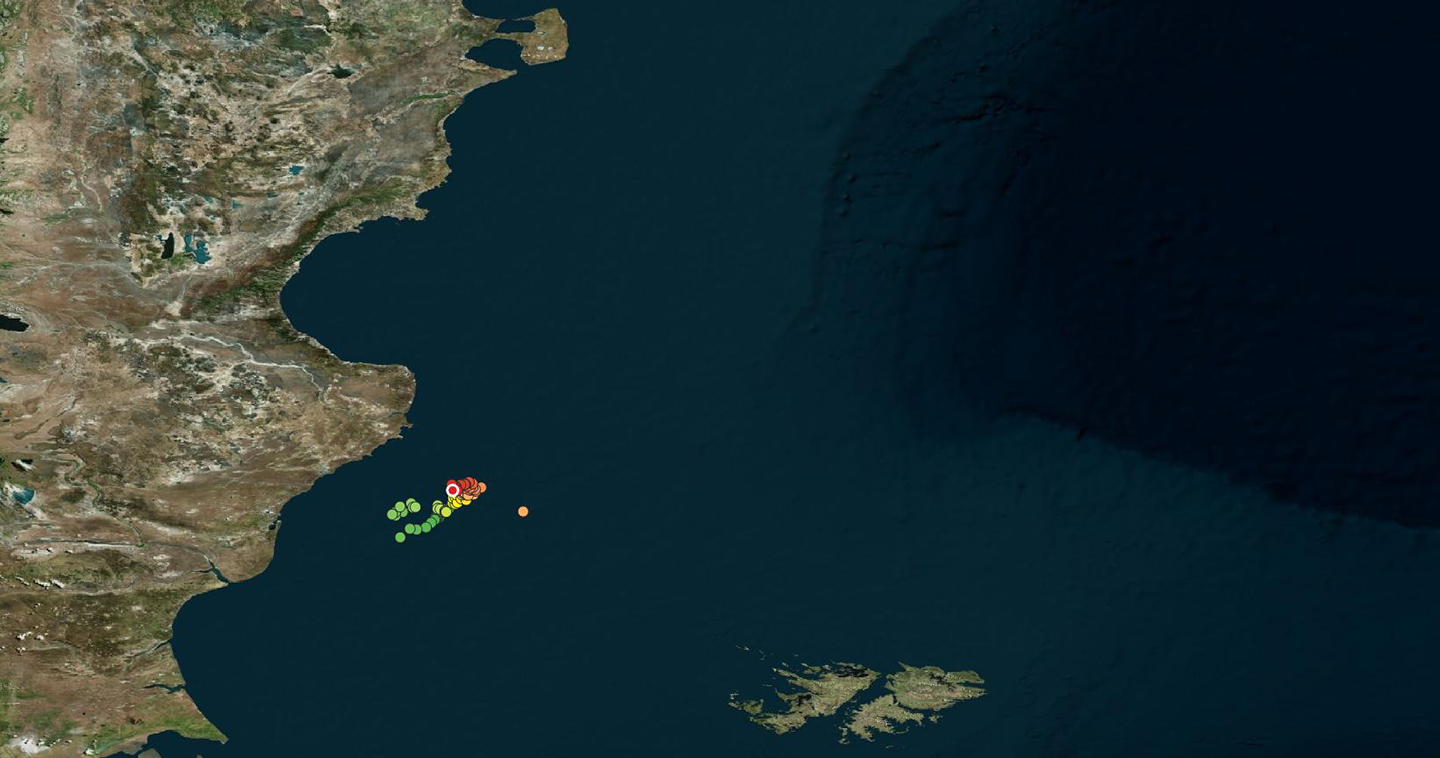
November 2 – November 9, 2019
Fiesta is 5 kilometers away from El Gris. These males have almost always moved together in these last days. If a relationship exists between these two whales we will know it once the results of the genetic studies on the skin samples taken from these whales when their transmitters were attached are available.

October 27 – November 1, 2019
Fiesta is a male whale who copied almost exactly the short excursion that El Gris made last week. Although the whales’ migrations to their feeding areas are solitary, except when the whales involved are a mother and her calf, we know nothing about the possible interactions between adults during these excursions.
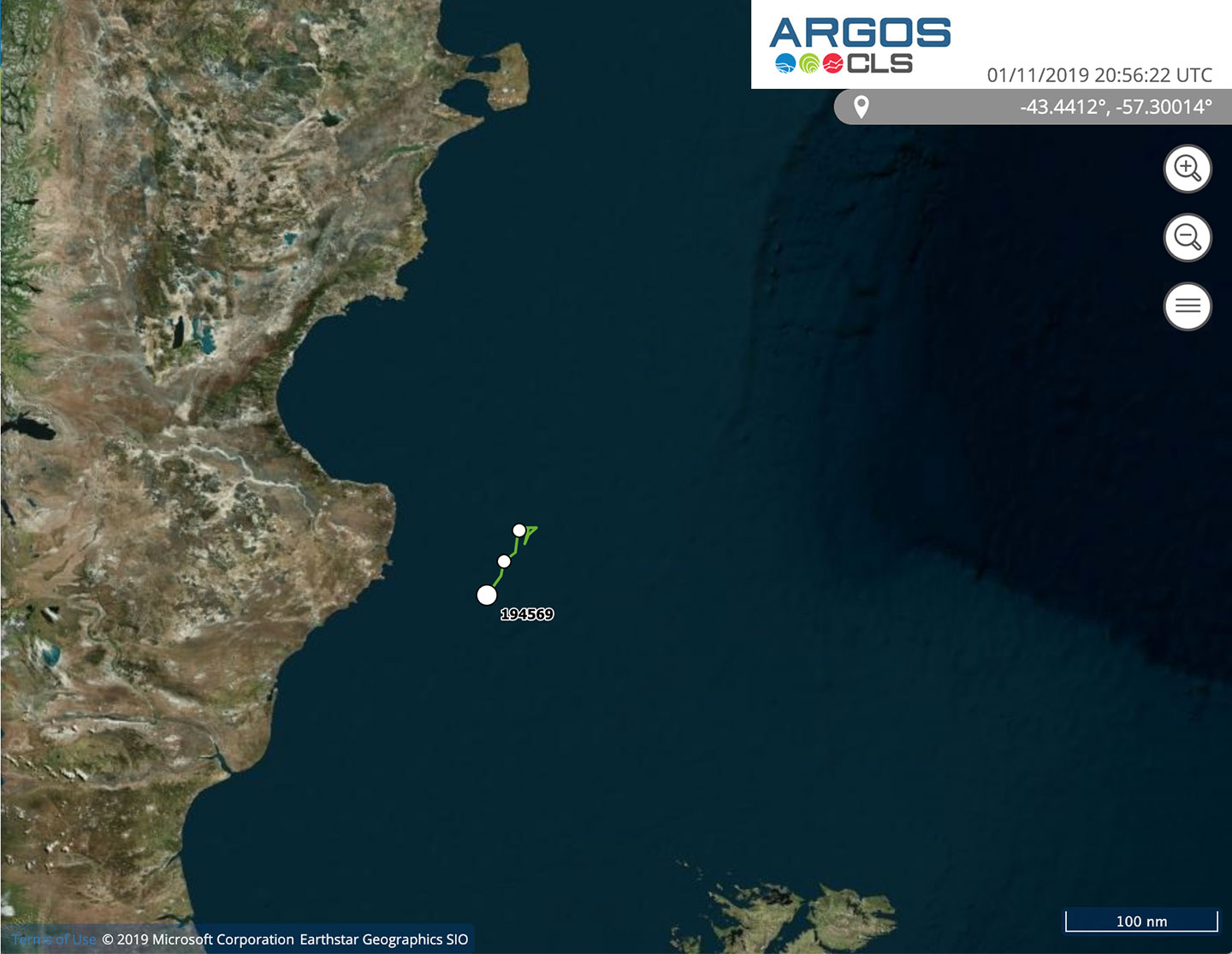
October 16 – October 26, 2019
Swimming directly south at a sustained velocity of between 5 and 10 kilometers per hour, Fiesta arrived at an area 150 kilometers east of Puerto Deseado, in which “69”, Metido and El Gris are also present.
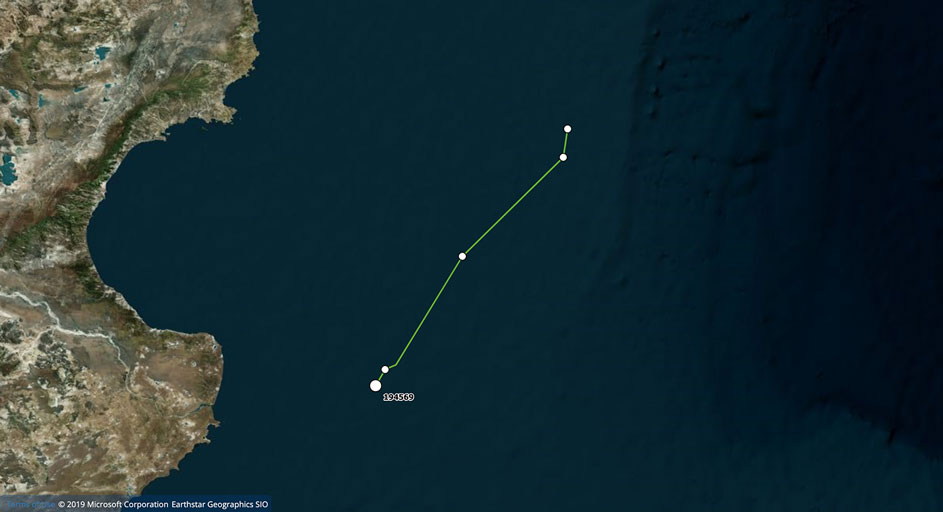
24 de Septiembre – 15 de Octubre 2019
Fiesta is an adult male who had a satellite transmitter attached September 24. He almost immediately left Golfo Nuevo, crossed the continental shelf traveling southwards, then swam north, and is now swimming in an area where the continental shelf drops off, the continental slope, about 300 kilometers from the Valdes Peninsula. It is possible that Fiesta is feeding in these areas of the Patagonian ocean.
